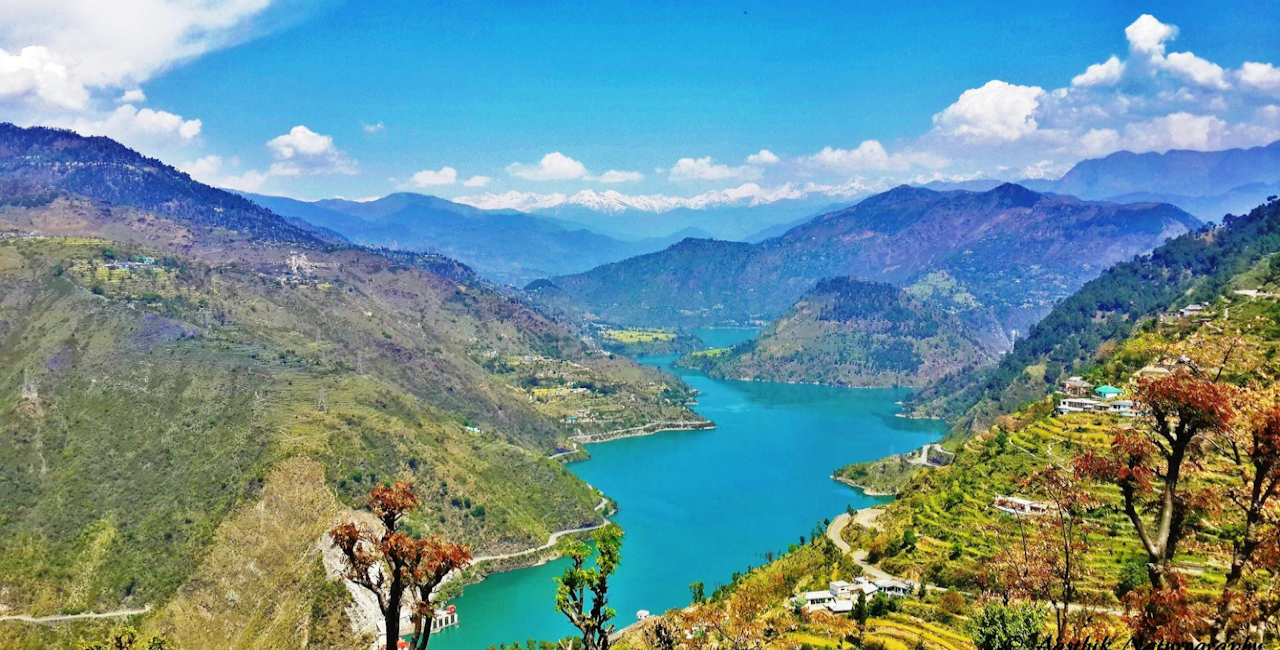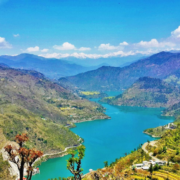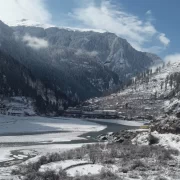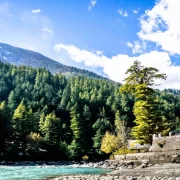
Chamba: A Timeless Gem of Heritage, Nature, and Culture in Himachal Pradesh
Chamba, a picturesque town in the northern Indian state of Himachal Pradesh, is renowned for its scenic landscapes, rich cultural heritage, and historical significance. Nestled amidst the majestic Himalayas at an elevation of around 996 meters (3,268 feet), Chamba offers a blend of natural beauty and historical charm that attracts travelers from across the world. The town is situated on the banks of the Ravi River and serves as the administrative center of the Chamba district. Known for its ancient temples, vibrant handicrafts, and serene environment, Chamba holds a unique place in the cultural landscape of Himachal Pradesh.
Historical Background
The history of Chamba dates back over a thousand years. According to legends, it was founded by Raja Sahil Varman in the 10th century. The town is named after Champavati, the king’s daughter, and the Champavati Temple stands in her honor. Chamba was once part of the medieval kingdom of Bhuri Singh, which played a significant role in regional politics and maintained its autonomy even during British rule. The town’s architectural heritage is deeply rooted in its past, reflected in its temples, palaces, and ancient monuments.
Architectural Marvels and Ancient Temples
One of the most captivating aspects of Chamba is its remarkable architecture, primarily its ancient temples. The Lakshmi Narayan Temple, dedicated to Lord Vishnu, is the largest and most popular temple in Chamba, dating back to the 10th century. Built in the Shikhara style, this temple complex is an epitome of the region’s architectural splendor. Another notable temple is the Chamunda Devi Temple, perched atop a hill and offering panoramic views of the town. The richly decorated stone carvings and the peaceful surroundings make it a must-visit for spiritual seekers and history enthusiasts.
The Bhuri Singh Museum, established in 1908, is another architectural highlight of Chamba. Named after Raja Bhuri Singh, the museum houses a remarkable collection of Pahari paintings, ancient inscriptions, weapons, and artifacts that give insight into the royal legacy of Chamba. The museum also showcases miniature paintings from the Basohli and Kangra schools, which are notable for their vibrant colors and intricate detailing.
Traditional Arts and Crafts
Chamba is celebrated for its handicrafts, particularly its unique style of embroidery known as Chamba Rumal. This handwoven cloth, often featuring intricate patterns and vivid scenes from Hindu mythology, is a prized art form that originated in the region and has been passed down through generations. The designs on Chamba Rumal are often inspired by local folklore and religious themes, making each piece a symbol of the town’s artistic heritage. Additionally, Chamba is known for its metal crafts and traditional jewelry, which reflect the region’s craftsmanship and artistic finesse.
The town is also famous for its Pahari paintings, which have a distinctive style with bold colors, elaborate costumes, and detailed depictions of local legends and epic tales. The Pahari art style is an essential part of Chamba’s cultural identity, often featuring vibrant depictions of deities and scenes from the Ramayana and Mahabharata.
Natural Beauty and Outdoor Activities
Chamba’s natural beauty is a major draw for visitors. Surrounded by lush green valleys, dense forests, and snow-capped mountains, the town provides a serene and breathtaking backdrop for outdoor activities. Trekking is a popular pursuit, with trails that lead to scenic spots like Khajjiar, known as the “Mini Switzerland of India,” and Bharmour, an ancient town with temples and trekking routes leading to Manimahesh Lake. The Dhauladhar range and Pir Panjal peaks offer stunning trekking routes and camping sites, attracting adventure enthusiasts.
Additionally, Chamba’s rivers, especially the Ravi, offer opportunities for fishing and river rafting. Nature lovers can explore the Kalatop Wildlife Sanctuary, home to diverse flora and fauna, including leopards, bears, and a variety of bird species. For those seeking relaxation, the nearby hot springs of Tissa and Katasan provide a rejuvenating experience amidst nature.
Festivals and Local Culture
Chamba’s cultural richness is evident in its festivals, with the Minjar Festival being the most prominent. Celebrated every August, the festival marks the end of the monsoon season and is dedicated to the deity of agriculture. The Minjar fair is a week-long celebration filled with music, dance, and vibrant processions, showcasing the region’s folk traditions. Locals dress in colorful attire and offer prayers, and visitors get to witness the authentic cultural spirit of Chamba.
The Sui Mata Festival, held in honor of Queen Sui, is another unique celebration that reflects the town’s traditions and values. This festival includes rituals, processions, and dance performances, keeping the local folklore alive. Additionally, Chamba’s people are warm and welcoming, known for their simple yet rich lifestyle rooted in tradition and hospitality.
Conclusion
Chamba is a captivating destination that offers a mix of natural beauty, cultural heritage, and adventure. With its ancient temples, exquisite handicrafts, scenic landscapes, and vibrant festivals, it provides a fulfilling experience for all types of travelers. Whether one is interested in history, art, spirituality, or nature, Chamba has something to offer. As it continues to preserve its age-old traditions while embracing modernity, Chamba stands as a testament to the timeless beauty and cultural diversity of Himachal Pradesh.
Recent Posts
Chamba: A Timeless Gem of Heritage, Nature, and Culture in Himachal Pradesh
Exploring Harsil: The Hidden Gem of Uttarakhand
Harsil: Uttarakhand’s Hidden Himalayan Paradise
All Categories

Thailand




